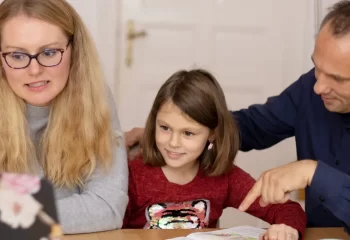Learning process is the process that helps us develop and grow. In general, in schools, the learning system is the same. However, lately, there is a need for an update of the learning environment and learning processes. This is because of the development of the society, of the economic and social needs and of the globalised world we live in.
Active learning slowly takes over passive learning and for some, the reasons are obvious. There still are traditional classes and learning environments where passive learning is the main type of learning. There is no such thing as the right answer between both – the right answer is what works for each student.
Most classrooms will have a mix of both active and passive learners. This can represent a challenge for the teacher, who should first understand the advantages and disadvantages of each approach and how to help students identify their learning style.
Active Learning
Active learning is a student-centred approach to learning in which students participate in activities and discussions to help them better understand the topic.
Active learning advantages
One of the main benefits of active learning is that students participate more in analysis and synthesis of information and develop their critical thinking skills. Active learning engages students more, and they learn real-world applications for the information.
Active learning disadvantages
It can be easy to lose focus in active learning. In comparing active learning vs passive learning, much less information is transmitted in active learning. Active learning can also be more difficult for teachers, who have less control over how the lesson proceeds and may need an adaptable lesson plan.
Activities that stimulate active learning in school
Small group discussions, debates, doing class presentations, role-playing and experiments all promote active learning.
Passive Learning
Passive learning is associated with more traditional methods of instruction, including lectures and reading in order to absorb information.
Passive learning advantages
In passive learning, an instructor can communicate a great deal of information to students at once. Passive learning also builds writing, organizational and listening skills.
Passive learning disadvantages
Passive learning can be boring for students and leave them unengaged in the topic. There might be fewer opportunities for teachers to assess student comprehension.
Activities that stimulate passive learning
Doing assigned reading, watching videos and listening to lectures are all ways that students may passively learn.
Active Learning vs Passive Learning – Key Differences
While some students will respond better to one or the other type of learning, both active and passive learning have their place. Active learners still need to learn some foundational information before being able to work with the material at a higher level while passive learners need to be able to apply what they have learned.
Development of Skills
Active learners may improve research, public speaking and analysis skills. In passive learning, students develop such skills as writing, listening and defining or describing. They tend to perform well on tests.
Type of Thinking Involved
The divergent thinking involved in active learning means that students do not seek a single right answer. They have more of a big-picture model of information and better understand its application in the “real world.” In passive learning, which involves convergent thinking and a single correct answer, students can retain a large number of facts.
How Learning is Achieved
With active learning, students learn by getting involved in the information and synthesizing it through such methods as debate, experiments and other hands-on exercises. Passive learning is a more internal process in which students take in and memorize the information that is provided to them.
Role of Students
Students in active learning environments are expected to apply the information in various activities. They are also encouraged to question the information they are given and to even be critical of it. In passive learning, students are expected to primarily absorb the information. Despite the descriptor of this type of learning as “passive,” students may also need to take on more responsibility for absorbing the information.
Role of Teachers
In active learning, a teacher is more of a facilitator and may even learn along with students. In passive learning, the teacher is looked on as someone who has mastered the material and can impart it to others.
How to help students discover their learning style
Teachers can help students discover their learning styles by talking to them about how they learn or having them write a self-assessment about their own approach to learning. Teachers can also use observation to determine how a student learns best.
Examples
Passive learners usually prefer straightforward presentations of material in auditory form. Therefore, a teacher might give passive learners assigned readings or links to online lectures to supplement their learning. Active learners may be more visual in focus and may do better when they are hands-on with the concepts they are learning. They might also prefer to learn within groups rather than on their own. Teachers could make sure these students have the opportunity to engage with the material through discussion, experimentation and similar methods. While the passive learning definition may make it sound as though the student is doing less work, both types of learning involve students receiving and making use of information. Teachers should endeavour to include both types of learning in the classroom.
Learning at Spark School
What we do recommend to our students is to choose the learning type they feel most comfortable with.
While we practice a mix of both, we mostly focus on active learning. We support our students to get as engaged as they want and develop their critical thinking skills.
We accept the benefits of passive learning and this is the reason why we also include it in our learning system, but we believe that active learning brings more benefits to today’s necessities.
We do this through:
– allowing them to take on challenges
– helping them to find solutions
– supporting them to make decisions
– developing their critical thinking
– assemblies
Conclusion
Active learning and passive learning are just as important in the learning process.




